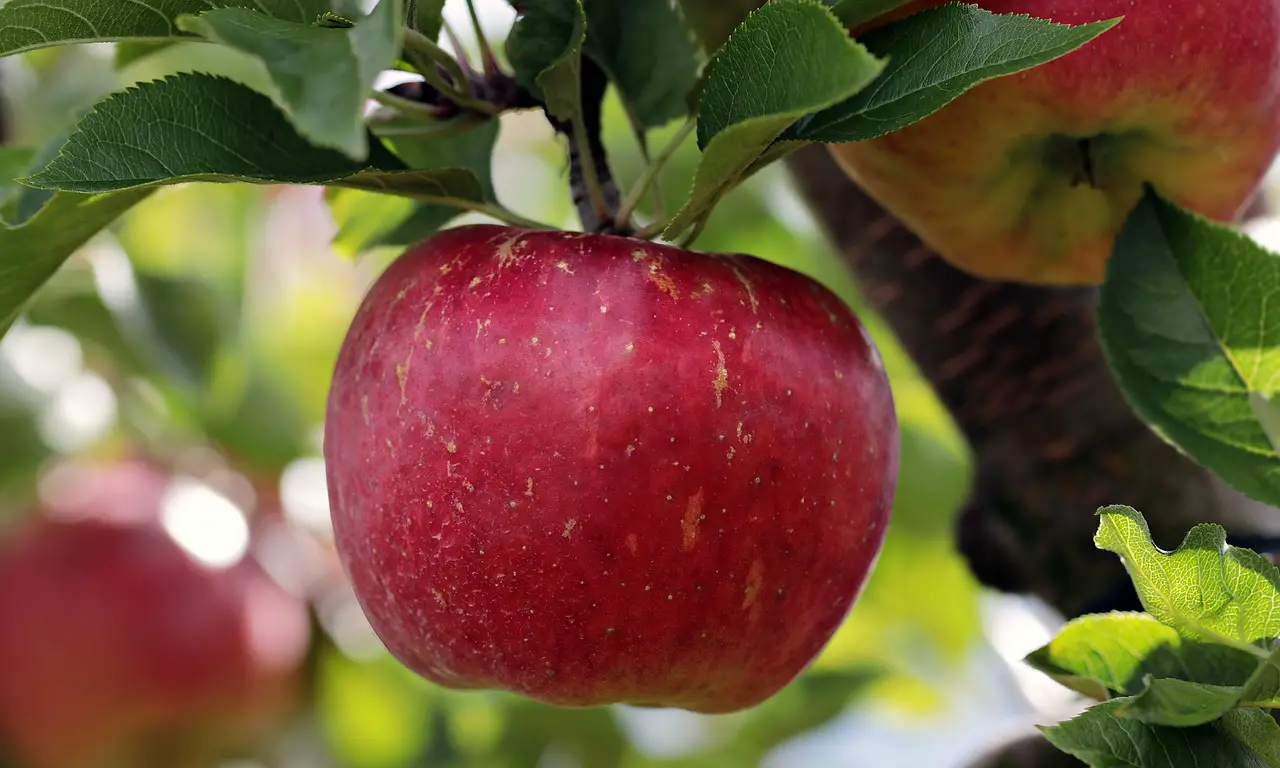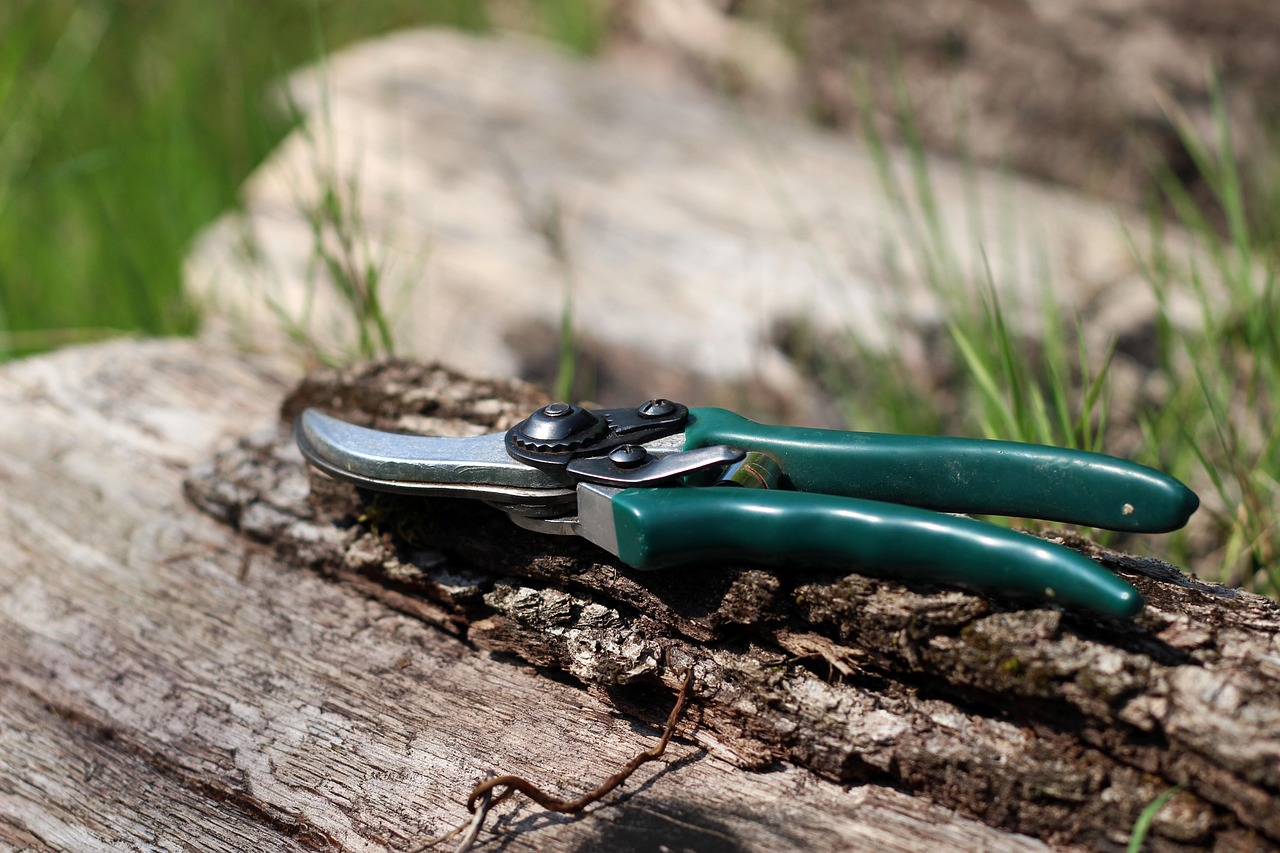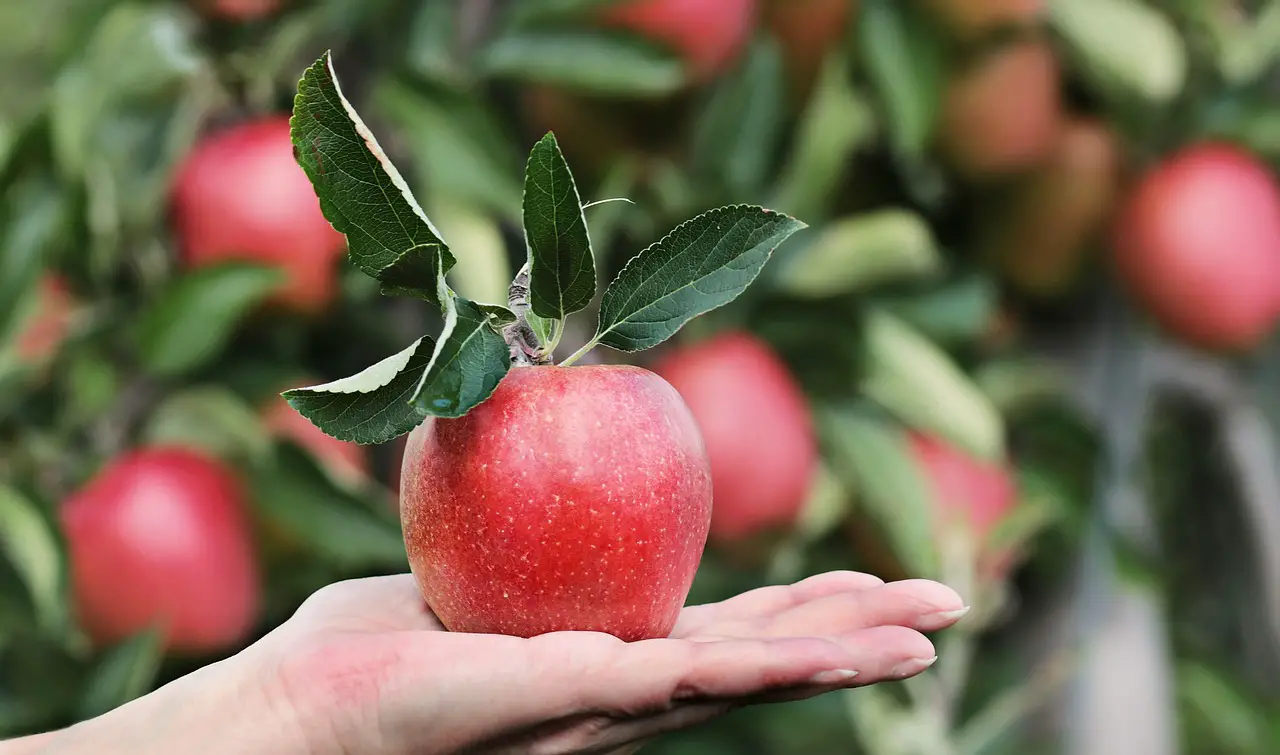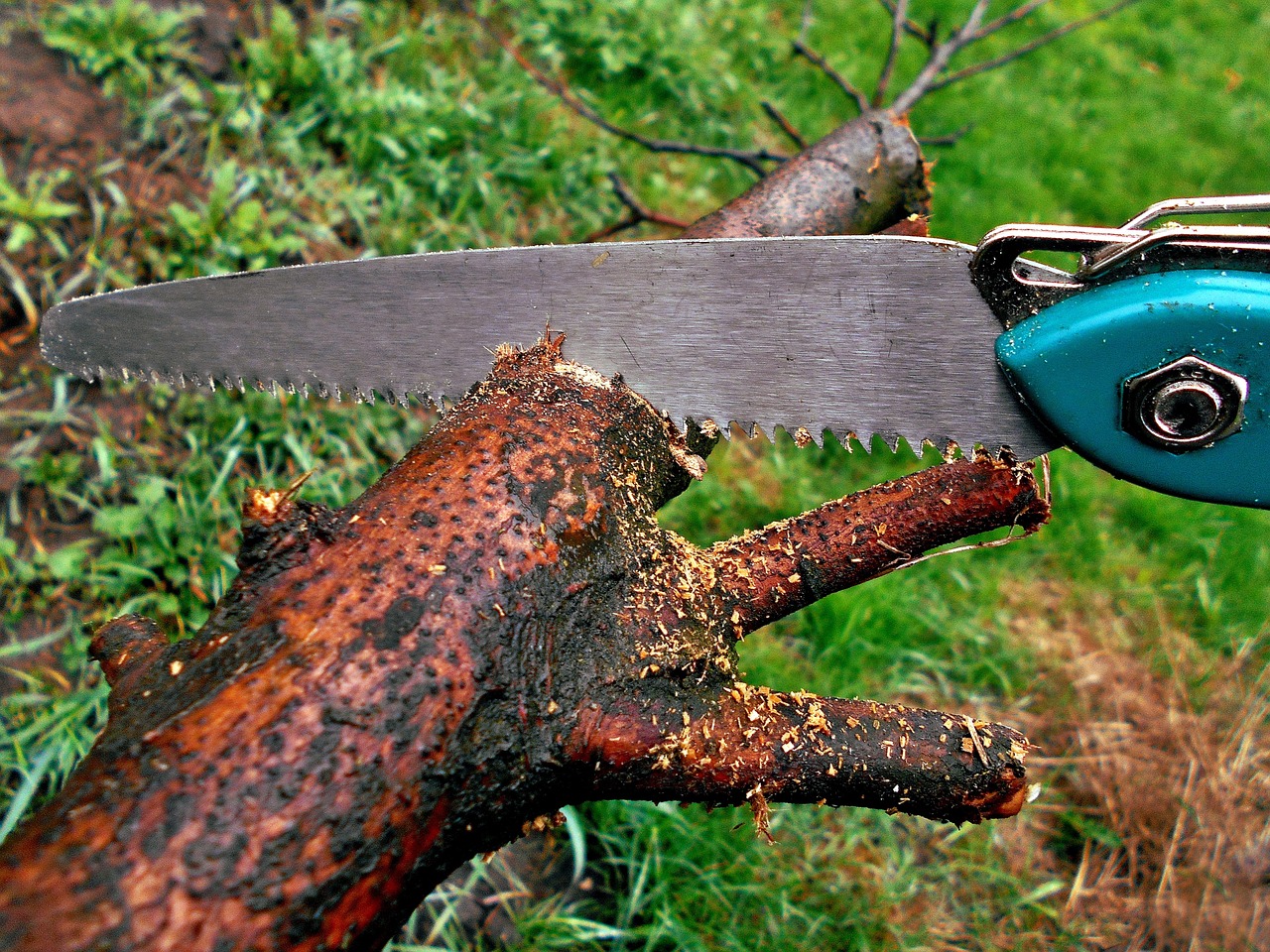When pruning large fruit trees, avoid making excessive cuts, neglecting proper tools, ignoring tree health signs, and pruning at the wrong time. These mistakes can lead to poor growth, reduced fruit yield, and even tree death.
Pruning is an essential practice for maintaining the health and productivity of large fruit trees. It involves removing specific branches to improve tree structure, enhance sunlight exposure, and encourage better air circulation. However, improper pruning techniques can cause significant damage. This article will explore common mistakes made during the pruning process and how to avoid them.

Before diving into the specific mistakes, it is important to understand the factors that influence successful pruning. Each type of fruit tree has its own growth habits and seasonal needs. For example, peach trees require heavy pruning in late winter, while apple trees benefit from lighter pruning in early spring. Knowing these specifics can help you make informed decisions when approaching your tree.
Common Mistakes to Avoid
Understanding the common pitfalls in pruning large fruit trees can help you achieve better results. Below are some of the most frequent mistakes made by gardeners and tree care professionals alike.
- Over-Pruning: Excessive cutting can stress the tree and lead to poor fruit production. Aim for balance, removing only what is necessary.
- Ignoring Correct Timing: Pruning at the wrong season can disrupt the tree’s natural growth cycle. Always research the best time for your specific tree.
- Using Dull Tools: Pruning with dull or inappropriate tools can damage branches and invite disease. Always use sharp, clean tools for a clean cut.
- Neglecting Tree Health: Failing to assess the overall health of the tree before pruning can lead to further damage. Look for signs of disease or pests.
- Improper Cuts: Making flush cuts or leaving stubs can hinder healing. Learn the correct techniques for making cuts at appropriate angles.
Each of these mistakes can have negative consequences on your fruit tree’s overall health and productivity. Let us explore each mistake in detail to better understand how they can impact your trees.

Over-Pruning
Over-pruning occurs when too much foliage is removed at once. This can shock the tree, leading to reduced fruit yield and growth. Ideally, you should remove no more than 20% of a tree’s canopy in a single year. This helps maintain a healthy balance between foliage and fruit production.
Ignoring Correct Timing
The timing of your pruning efforts is crucial. For most fruit trees, late winter or early spring is the best time to prune. This allows the tree to heal before the growing season begins. Pruning too late in the season can cause stress as the tree attempts to heal while also producing new growth.
Using Dull Tools
Dull tools not only make the job harder but also create jagged cuts that can lead to infections and disease. Always ensure your tools are sharp and clean before starting any pruning task. Invest in good-quality pruners, saws, and loppers designed for larger branches to facilitate smooth cuts.

Neglecting Tree Health
A thorough assessment of your tree’s health before pruning is essential. Look for signs of disease, pests, or weak branches that may need special attention. Pruning a weak or diseased branch without understanding its condition can lead to further damage or even tree loss.
Improper Cuts
The way you make cuts is equally important as what you are cutting. Flush cuts can expose the tree to infections, while leaving stubs can impede healing. To make proper cuts, aim for an angle that encourages water runoff and use techniques that promote healthy regrowth.
| Mistake | Description | Consequence |
|---|---|---|
| Over-Pruning | Removing too much foliage | Reduced yield and growth |
| Ignoring Correct Timing | Pruning at the wrong season | Stress on the tree |
| Using Dull Tools | Dull or inappropriate tools | Damaged branches and disease |
| Neglecting Tree Health | Not assessing tree condition | Further damage or loss |
| Improper Cuts | Mistakes in making cuts | Poor healing and infections |
Avoiding these common mistakes ensures that your large fruit trees remain healthy and productive. By taking the time to learn about proper techniques and timing, you will create a thriving environment for your trees to flourish.

Understanding the Pruning Process
To effectively prune large fruit trees, it is important to understand the pruning process itself. This involves several steps, including planning, assessing, and executing the actual cuts. Each step plays a vital role in the overall health and productivity of the tree. Below, we will break down these steps to provide a comprehensive overview.
Planning Your Pruning
Before you start pruning, take time to plan your approach. Proper planning can help you avoid common mistakes and ensure that your tree remains healthy. Here are some key points to consider:
- Know Your Tree: Different fruit trees have various growth habits. Research the specific needs and characteristics of the tree you are pruning.
- Seasonal Timing: As mentioned earlier, timing is crucial. Ensure you are pruning during the appropriate season for your tree type.
- Goals for Pruning: Determine what you want to achieve with your pruning efforts. Are you focusing on shaping the tree, enhancing fruit production, or removing dead branches?
Assessing the Tree
Once you have a plan, it’s time to assess the tree itself. This step involves examining its structure and health to make informed decisions about where to cut. Here are some things to look for:
- Branch Structure: Look for branches that cross over each other or grow inward. These can create crowding and limit light penetration.
- Dead or Diseased Wood: Identify any branches that show signs of disease or death. These should be removed to prevent further spread.
- Growth Patterns: Observe how the tree has grown in the past year. This can help you understand which branches are most productive.
Executing the Cuts
After planning and assessing, it’s time to execute the actual cuts. This is where technique plays a critical role in successful pruning. Here’s how to approach this step:
- Start with Dead or Diseased Wood: Remove any branches that are clearly dead or show signs of disease. This helps protect the rest of the tree.
- Thin Out Crowded Areas: Remove branches that are crossing over each other or growing inward. This improves air circulation and light exposure.
- Shape the Tree: Focus on creating a balanced shape that allows for even growth and better fruit production. Aim for an open center to promote sunlight penetration.
- Make Clean Cuts: Use sharp tools to ensure clean cuts. This minimizes damage and promotes faster healing.
Tools for Pruning Large Fruit Trees
The right tools can make a significant difference in your pruning efforts. Using appropriate equipment not only makes the job easier but also enhances the quality of your cuts. Below are essential tools for pruning large fruit trees:
- Hand Pruners: Ideal for small branches, hand pruners allow for precise cuts. They are perfect for removing small twigs and dead wood.
- Loppers: For branches that are too thick for hand pruners, loppers provide extra leverage and cutting power.
- Saws: A pruning saw is necessary for larger branches. Choose a saw with fine teeth for cleaner cuts.
- Pole Pruner: For high branches, a pole pruner allows you to reach without needing a ladder.
- Safety Gear: Always wear gloves, safety glasses, and a hard hat if you are working with large trees or using ladders.
Maintaining Your Tools
Proper maintenance of your pruning tools is crucial for effective pruning. Here are some tips to keep your tools in top condition:
- Clean After Use: Remove sap and debris after each use to prevent rust and damage.
- Sharpen Regularly: Keep blades sharp to ensure clean cuts, which promotes healing in the tree.
- Store Properly: Store tools in a dry place to prevent rusting and damage.
The Importance of Post-Pruning Care
After pruning, taking care of your tree is essential for its recovery and growth. Proper post-pruning care can enhance the benefits of your efforts. Here are some strategies to consider:
- Watering: Ensure your tree receives adequate water following pruning, especially in dry seasons.
- Fertilization: Consider applying a balanced fertilizer to support new growth.
- Pest Control: Monitor for pests that may be attracted to freshly cut areas and take action as needed.
Understanding these aspects of pruning will help ensure that your large fruit trees thrive. By being thorough in your planning, assessing properly, using the right tools, and providing post-care, you set the stage for a healthy and productive tree.
Understanding Tree Growth and Development
To effectively prune large fruit trees, it is essential to have a solid understanding of tree growth and development. Each tree species has unique growth patterns and requirements that influence how and when pruning should occur. By aligning your pruning practices with the natural growth habits of the tree, you can encourage healthier growth and better fruit production.
Growth Habits of Fruit Trees
Fruit trees typically exhibit different growth habits, which can be categorized into three main types: open-center, central leader, and modified leader. Understanding these types will aid in planning your pruning strategy.
- Open-Center Trees: These trees have a vase-like structure, allowing sunlight to reach the inner branches. Pruning should focus on maintaining this open shape by removing inward-growing branches.
- Central Leader Trees: These have a single main trunk with lateral branches. Pruning should encourage vertical growth while ensuring that side branches do not compete with the leader.
- Modified Leader Trees: These represent a hybrid of the first two types. Pruning should balance both vertical and lateral growth to maintain overall tree health.
The Role of Seasonal Changes
Understanding how seasonal changes affect tree growth is another key aspect of effective pruning. Fruit trees respond differently based on the time of year. The following outlines how to approach pruning at various stages in the growing season:
- Late Winter to Early Spring: This is generally the best time for heavy pruning. The tree is still dormant, which minimizes stress and encourages new growth in spring.
- Spring: Light pruning can be done during this season to remove any dead or diseased wood that may have become apparent as new growth appears.
- Summer: Summer pruning is useful for controlling size and shape. Focus on thinning out excessive growth to improve air circulation.
- Fall: Avoid heavy pruning in the fall, as this can leave the tree vulnerable to winter damage. However, minor maintenance can be performed to prepare for dormancy.
Recognizing Signs of Stress in Trees
A healthy tree will exhibit signs of vigorous growth and vitality, while stressed trees may display various indicators of distress. Recognizing these signs early can help you make informed decisions about pruning and care.
Common Signs of Tree Stress
- Wilting Leaves: If leaves are drooping or wilting, it may indicate a lack of water or nutrients.
- Discolored Foliage: Yellowing leaves or unusual spots may signal disease or nutrient deficiencies.
- Pest Infestation: Visible pests on branches or leaves can compromise tree health. Early intervention is crucial.
- Stunted Growth: If the tree is not growing as expected, it may be experiencing stress from environmental factors or root issues.
Caring for Stressed Trees
If you notice signs of stress in your fruit tree, taking immediate action can prevent further decline. Here are some steps to consider:
- Assess Water Needs: Ensure that your tree is receiving adequate water, especially during dry spells.
- Fertilize Wisely: A soil test can help identify nutrient deficiencies. Based on results, apply appropriate fertilizers to support recovery.
- Pest Management: Implement pest control measures as necessary. This may include natural predators, insecticidal soaps, or other treatments.
- Prune with Caution: While it might be tempting to prune heavily to remove stressed branches, consult with an expert to avoid further harming the tree.
The Impact of Environmental Factors
Environmental factors such as soil quality, climate, and local pests play a significant role in the health of fruit trees. Understanding these influences can inform your pruning strategy and overall tree care plan.
Soil Quality and Composition
The quality of soil in which your fruit trees grow greatly affects their health and productivity. Well-drained, nutrient-rich soil promotes healthy root systems and robust growth. Consider the following factors:
- pH Levels: Most fruit trees prefer slightly acidic to neutral pH levels (6.0-7.0). Testing soil pH can help guide fertilizer choices.
- Nutrient Content: Regular soil testing can help identify deficiencies in nitrogen, phosphorus, potassium, and other essential nutrients.
- Diversity of Microorganisms: Healthy soil contains beneficial microorganisms that support root health. Consider adding organic compost to enrich soil life.
Climate Considerations
The local climate significantly impacts fruit tree growth patterns. Factors such as temperature fluctuations, rainfall, and sunlight exposure should be taken into account when planning pruning and care. Here are tips for managing climate impacts:
- Temperature Extremes: Protect trees from extreme cold or heat through proper watering and mulching.
- Sufficient Sunlight: Ensure that trees receive adequate sunlight by maintaining an open canopy through effective pruning.
- Rainfall Patterns: Adjust watering practices according to seasonal rainfall; overwatering can be just as harmful as underwatering.
A comprehensive understanding of tree growth, stress signs, and environmental factors will equip you with the knowledge needed to prune large fruit trees effectively. By applying this knowledge thoughtfully, you can enhance both tree health and fruit production over time.
Advanced Pruning Techniques
As you become more experienced with pruning large fruit trees, you may want to explore advanced techniques that can further enhance tree health and fruit production. These methods require a deeper understanding of tree biology and growth patterns. Below are some advanced pruning techniques to consider:
Thinning Cuts
Thinning cuts involve removing entire branches back to the point of origin. This technique can improve air circulation and sunlight penetration throughout the tree. Here are some benefits of thinning cuts:
- Encourages Healthier Growth: By removing excess branches, trees can focus their energy on producing stronger, healthier shoots.
- Reduces Disease Risk: Improved airflow helps prevent fungal diseases and pest infestations.
- Enhances Fruit Quality: Thinning allows remaining fruits to receive more nutrients, leading to larger and better-quality fruit.
Heading Cuts
Heading cuts involve cutting back a portion of a branch to a bud or lateral branch. This method can stimulate growth in specific areas and is useful for shaping the tree. Be mindful of the following:
- Promotes Lateral Growth: Heading cuts encourage side branches to grow, which can lead to a fuller canopy.
- Reduces Height: This technique is useful for managing tree height, making it easier to harvest fruit.
- Affects Flowering: Heading cuts can influence flowering patterns, so timing is crucial to avoid losing future crops.
Training Young Trees
Training young trees through strategic pruning can establish a strong foundation for their future growth. Here are some training methods:
- Central Leader Training: For trees that naturally grow with a single leader, ensure that this leader is dominant by selectively pruning competing branches.
- Open-Center Training: For trees that benefit from an open center, remove lower branches while maintaining the main scaffold branches to create a vase shape.
- Espalier: This technique involves training the tree to grow flat against a wall or trellis. It is ideal for small spaces and can enhance fruit production.
Common Questions and Answers
As you delve deeper into pruning practices, you may have questions regarding specific scenarios or techniques. Below are some frequently asked questions that can help clarify common concerns:
What should I do if I accidentally prune too much?
If you find that you have removed too much foliage, it is essential to take immediate action. Provide extra care by ensuring the tree is well-watered and consider applying a balanced fertilizer to promote recovery. Monitor the tree closely for signs of stress or new growth.
How often should I prune my large fruit trees?
The frequency of pruning depends on the species and age of the tree. Generally, major pruning should be done annually during the dormant season. Light maintenance can be performed throughout the growing season as needed.
Is it necessary to seal pruning cuts?
In most cases, sealing cuts is not necessary and can sometimes hinder natural healing processes. Allowing cuts to heal naturally is typically the best approach unless dealing with large wounds or specific diseases.
Final Thoughts
Pruning large fruit trees is both an art and a science. Understanding the fundamental principles, recognizing common mistakes, and applying advanced techniques are crucial for promoting tree health and maximizing fruit production. The insights shared in this article highlight the importance of planning, proper execution, and post-pruning care.
By investing time in learning about your specific tree species and refining your pruning techniques, you can cultivate thriving fruit trees that yield bountiful harvests year after year. Remember that patience and practice are key components in mastering the pruning process. Embrace the journey of caring for your trees, and they will reward you with delicious fruits and beautiful landscapes.
Your commitment to understanding the needs of your large fruit trees will ultimately lead to a fruitful and satisfying gardening experience. Happy pruning!
